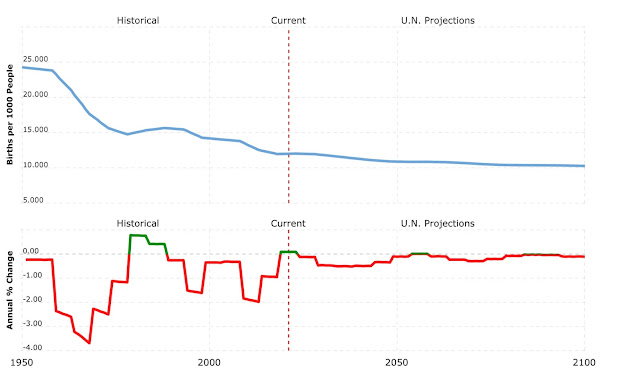The question posed in the title can be a perplexing problem and I am sure is of interest to both those who make a living running trucking companies as well as those who invest in them. If the market is a forward looking index (like they teach you on school) then the fact it has bid up stock prices would indicate it believes the economy is "booming" and if the economy is "booming" then there must be a lot of freight moving. I will attempt to explain why this connection (Market to freight volumes) is no longer true.
There will be two parts to this posting. The first will be to show the macroeconomic data I look at which tells me the freight market is slowing. The second part will be to show how the stock market could hit an all time high while the freight market slows.
There are 3 real reasons why the market (i.e., the SP500 and the Dow) is disconnected from what we, the "transporters of freight" see in the market:
- The alternative investment (i.e., 10yr).
- The % of the economy which has nothing to do with "goods".
- The Fed
Before I address each one, let's look at the data which supports why there is a "freight recession". For this I look at 3 different indices. First, my favorite, the "Total Business: Inventory to Sales Ratio" (St. Louis Fed). This measures how much activity is being used just to build inventories and the assumption is companies will not build inventories forever. When they stop building, the freight stops. Here is what the graph looks like back to 2015:
 |
| Inventory to Sales Ratio - St. Louis Fed |
This graph clearly indicates (looking at the boom and bust cycles) inventories decrease then, in a recession, they increase. The shaded areas above are key recessions. You can see leading up to 2016 the economy was slow and it actually was close to the peak of the 2001 recession in 2016. Then came the "sugar high" of expectations and tax cuts and the inventory was burning down until close to the end of last year. Since then, the economy has been building inventory. Not a good sign for the economy overall but more importantly, for this blog, not important for the freight industry. I feel like I should not have to say this however just to be clear, companies do not build inventory forever. So, even if freight does not slow immediately there would be a clear expectation from the rational investor that freight will slow. Freight has slowed.
Second, let's look at the PMI trends. As a reminder, the PMI (Purchasing Manager's Index) generally gives you a look at whether the economy is expanding or not. A reading of 50 or above is generally good and below that is contraction. The index I like to look at is the MFG PMI:
 |
| MFG PMI - Tradingeconomics.com |
I do not think I need to explain what is happening here suffice to say the decrease started around December of 2018 and has accelerated since then.
Since so much of the freight indices are tied up in hauling manufactured goods it is no doubt looking at this chart that there would be far less freight to haul and far fewer loads per truck then we would like.
The final piece of economic information is our labor force and the net change for employment. For this, I like to use a 3 month net change from the bureau of labor statistics. Why 3 months? Because BLS adjusts the previous two months as they get better data so by going to a 3 month net change you take into account most of the adjustments.
While employment is incredibly robust and generally "all is good" there are some signs of cracks:
 |
| 3 Month Net Change in Employment - BLS |
While there is still net positive adds what this is showing is the net positive is slowing quite a bit. Could be we have just run out of workers or it could be, based on the data above, employers are starting to be very cautious about adding any more employees.
To give you an example of this, the last three months (Mar, Apr, May 2019) readings were 521, 433(p), 452(p) (p - preliminary readings) respectively. All three of those were below the lowest reading measured in 2018 which was 565 (January 2018). Another indication of a slowing economy.
Ok, so, the bottom line for this PART I is clearly the economy is starting to slow. Not in a recession (yet) but clearly slowing. I have opinions on why and I will leave those to myself but this is why you are seeing the FED not only not increasing rates but the conversation is now about lowering rates.
Stay tuned for PART II which will discuss the 3 reasons why the market, even though all these indicators show a slowing, hit new highs.



















